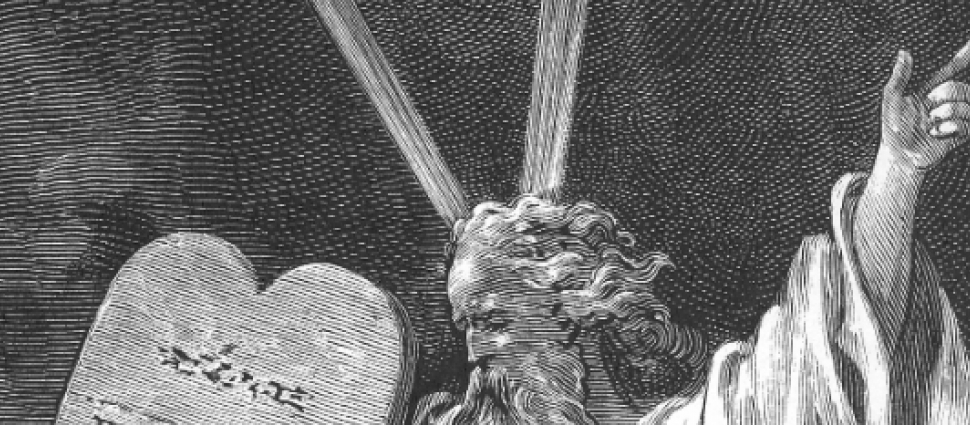Same in Substance and John 1:17

Apr 7, 2016
There are several passages in the New Testament that appear to make a stark contrast between the Old or Mosaic Covenant—the covenant relationship the Lord made with Israel at Mount Sinai (e.g., Ex. 19-24)—and the New Covenant made with believers in Jesus Christ. Consequently, if you are going to argue cogently that the Mosaic Covenant is a gracious covenant and the same in substance with the New Covenant, then you will need to provide an adequate explanation of these passages.
One such passage is John 1:17: “For the law was given through Moses; grace and truth came through Jesus Christ.” We will look at this verse through the lens of John Ball (1585-1640) and his book, A Treatise on the Covenant of Grace.
Undoubtedly, the apostle John is making a contrast between the Old (Mosaic) and New covenants. On one side of the divide is Moses and the law while on the other is Christ, grace, and truth. The issue, therefore, is not if there is a contrast but what kind of contrast there is. Since "law" is pitted against "grace" it would be easy to assume that it is a law/gospel or a covenant works/covenant of grace contrast. In other words, God through Moses related to Israel in the Promised Land on the principles of law, commandments, and works whereas God through Christ relates to the church in the world on the substantially different principles of grace, promise, and faith. However, as Ball pointed out, one problem with this approach is that Moses taught the gospel (e.g., John 5:46). So how then did Ball understand John 1:17? Simply put, he said that the contrast is between promise and fulfillment.
The law that was given through Moses included the ceremonial laws that prefigured the saving work of Christ. Because these laws were mere copies of God’s true redemptive work in Christ they were weak and ineffective. The blood of bulls and goats couldn’t take away the sins of God’s people or empower them to keep the commandments. The law could not in and of itself procure those things which it symbolized and signified. The only way for the law or Old Covenant to be effectual was but by the coming of Christ and the New Covenant. The copy had to be replaced by the reality. The shadow had to give way to the truth. Ball wrote, “The first covenant therefore could not be fulfilled or effectual, but by the bringing in of a second, which was prefigured thereby" (p. 119).
This aspect of the law of Moses is the key to unlocking the contrast in John 1:17. “Law” is indeed set in opposition to “grace” but in the sense that a weak copy is opposed to the powerful reality. Grace doesn’t come from the law itself but from Jesus who is the truth, and not a copy of the truth:
The Law was given by Moses [John 1:17] and the righteousness of faith was taught by Moses, as our Saviour testifies [John 5:46]. Why then does the Apostle in the words following add by way of opposition, but grace and truth came by Jesus Christ? The sense of the place seems to be this, that the Law prefiguring Christ, and redemption in Him, and teaching and commanding what ought to be done, but neither giving grace to do it, nor containing the substance of the thing prefigured, was given by Moses: but grace to do what was commanded came from Christ, in whom also the substance of what was prefigured by the Ceremonies is fulfilled (p. 119; see also John Calvin’s comments on John 1:17).
Although the law pointed to Christ and spoke of Christ, it could not do what only Christ could do and it could not give what only Christ could give. This is not to say that the Mosaic Covenant was devoid of grace (forgiveness and renewal) but that the grace received under Moses came not from the law of Moses but from Christ. This is why Ball said that the Old (first) Covenant had to be superseded by the New Covenant. The only way for the Old Covenant to be a gracious covenant and administer the gospel was for Christ to come in fulfillment of the Old Covenant.
With this understanding of John 1:17 we might paraphrase it thus: Moses delivered the law, which included impotent copies and shadows of salvation in Christ; grace and truth, that is actual salvation, including the forgiveness of sins and the power to obey, came through Jesus Christ. This verse, therefore, does not contradict the position that the Mosaic Covenant is a gracious covenant. For the contrast is not between works and grace but between promise and fulfillment.





